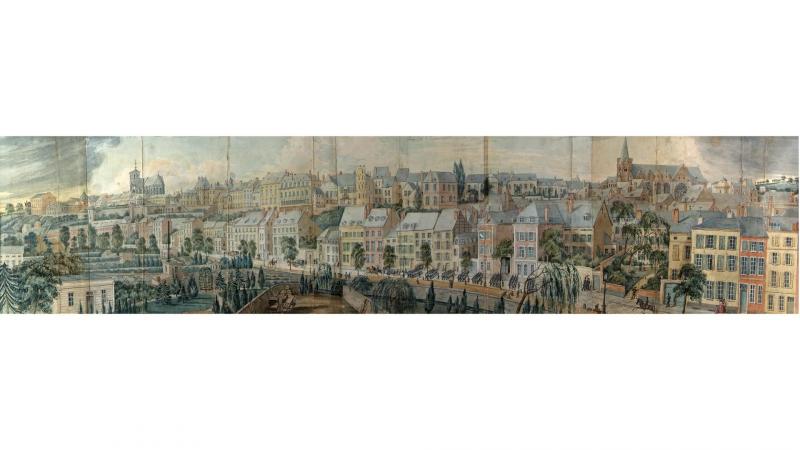The artist behind this piece could be Charles-Hamilton Smith (1776–1859), a British soldier and artist who depicted urban landscapes, maps, uniform boards and natural sciences.
This view, which is dated to 1814, extends from St. Martin's Basilica, on the left, to the Sainte-Croix collegiate, on the right. It is one of the few detailed depictions of Liège sites prior to 1850. For example, its almost photographic precision allows us to better (re)discover some of the architectural jewels of the Liège landscape, such as the Ancion house, the hotel van den Steen, the hotel de Méan and the hotel de Sélys, and to distinguish the former elements of buildings that were later remodelled or added.
In the foreground, it depicts the old Meuse canal, bordered by a quay that was named Micoud d’Umons, in reference to the prefect of the department of Ourthe. This piece was created using materials from the demolition of Saint-Lambert Cathedral. It is bordered by 17th and 18th century houses, most of which are no longer present. The façades are made of Mosan limestone; some are painted white or yellow, according to the use that began at the end of the 18th century and which would continue late into the 19th century. The roofs are covered with light grey slates.
Acquired in England by its former owner, a knowledgeable collector from Liège, the watercolour drawing entered the collections of the Museum of Religious Art and Mosan Art in 2005, thanks to the support of the "Les Amis du Musée d’Art religieux et d’Art mosan" not-for-profit association, the City of Liège and private patrons.
